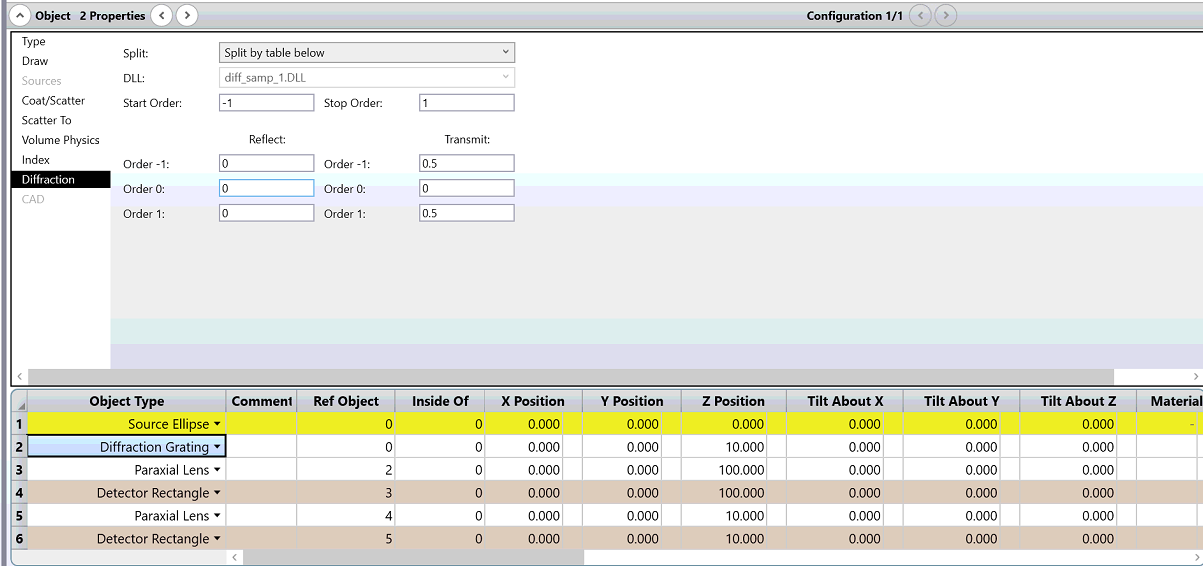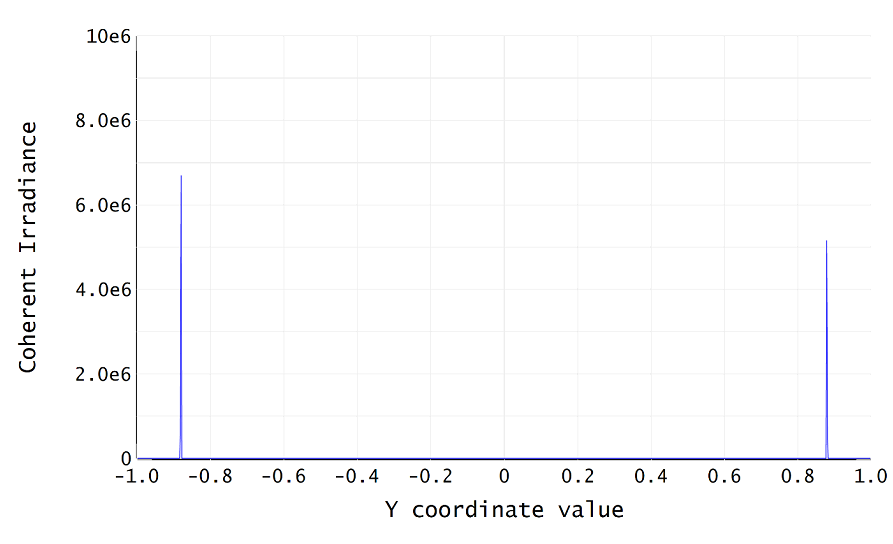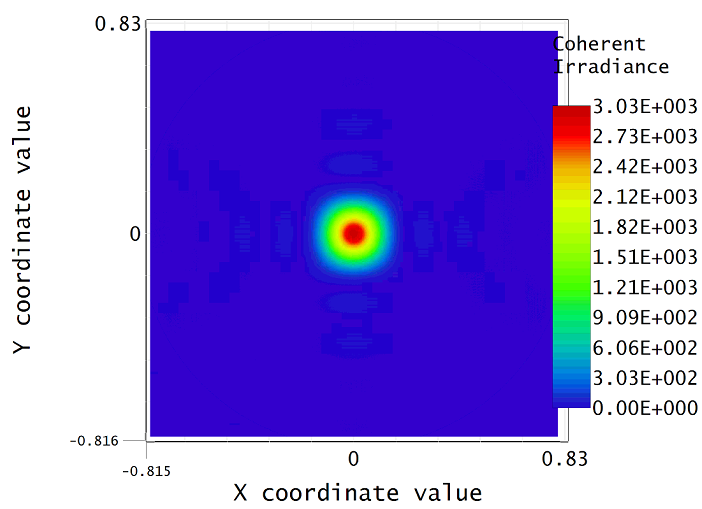Hi,
I'm trying to simulate a system with a diffractive grating and a detector. I added two relay paraxial lenses in between to conjugate the grating and the detector. Here's my lens data:

I only looked at the +/-1 diffractive orders. The beam should interferece at the focal plane of the first lens(obj3) and form two dots on the dector(obj4). It does form two dots on the first detector(obj4), but I don't know why the left dot is brighter than the right dot.

After the second paraxial lens(obj5), I expect to see interference fringes on the second detector(obj6) which is at the focal plane of the second lens(obj5). However, what I got is:

There's no interference pattern on the second detector. If I change the second paraxial lens to a real lens, then I can get interference pattern on the 2nd detector. But I need a perfect lens to simulate my system. How to solve it?



